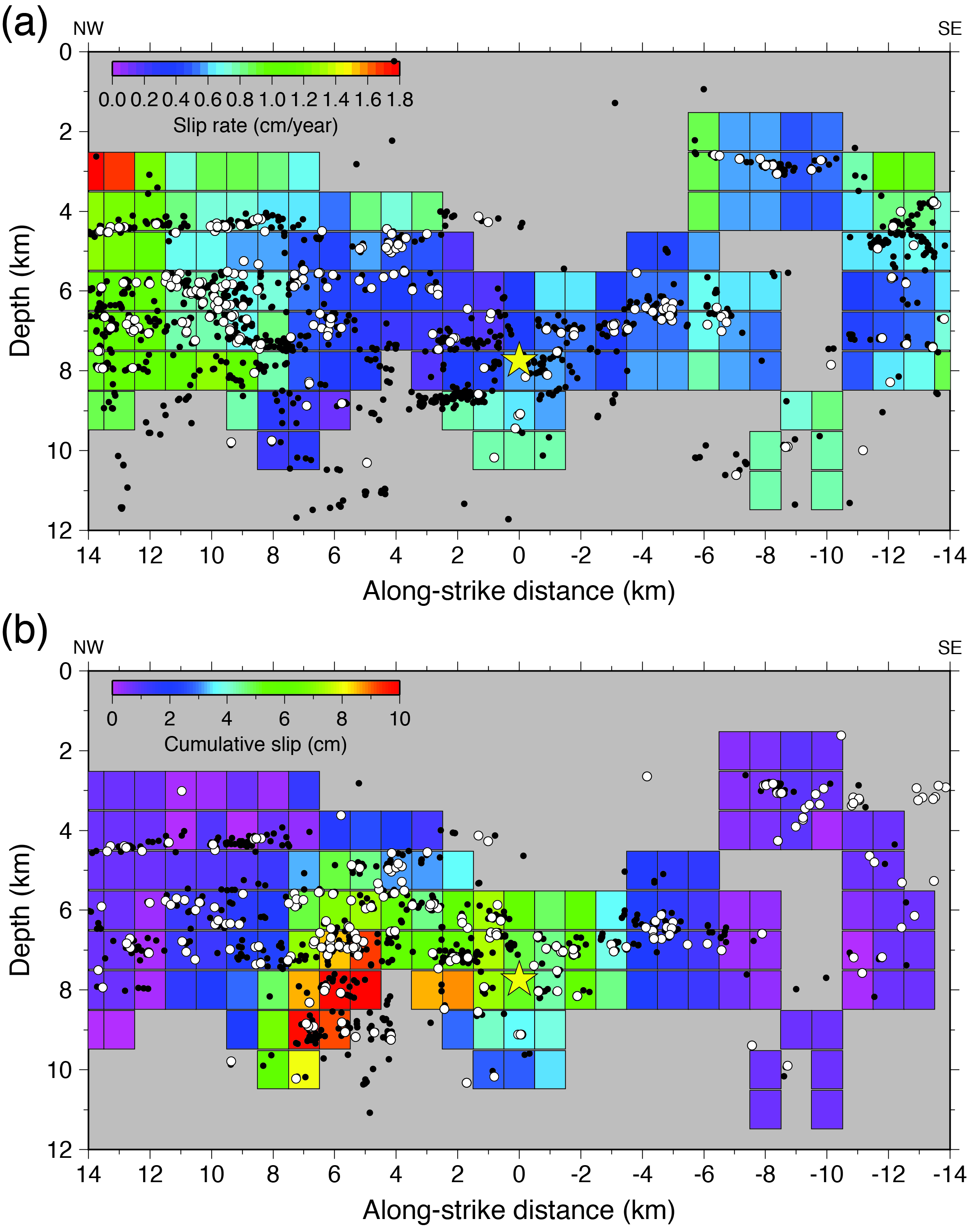Science Nugget - By Taka'aki Taira (Berkeley Seismological Laboratory), Roland Bürgmann (Berkeley Seismological Laboratory), Robert M. Nadeau (Berkeley Seismological Laboratory), Douglas S. Dreger (Berkeley Seismological Laboratory) - NSF # EAR 0951430 | 2010-2015
The San Juan Bautista (SJB) segment is one of the most seismically active sections of the 1300 km long San Andreas Fault (SAF) in California and forms the transition zone between the 1989 magnitude (M) 6.9 Loma Prieta earthquake rupture zone and the central SAF creeping segment. The temporal behavior of aseismic slip at depth can be inferred from characteristically repeating earthquake (CRE) activity. We examined spatial and temporal variations in fault slip near the 1998 Mw 5.1 earthquake that is the largest instrumentally observed earthquake in the San Juan Bautista area (Taira et al., 2014). Our analysis finds a 15-km-long partially locked section located near the 1998 earthquake rupture (Figure 1a). The partially locked section could be capable of producing a Mw 6.22 earthquake every century. Substantial postseismic slip is observed through the repeating micro-earthquake activity and lasted for more than 1 year. The distribution of the postseismic slip shows an asymmetric pattern in which the postseismic slip expanded primarily to the northwest with a maximum slip of 9 cm occurring at a depth of 8 km (Figure 1b). The large and asymmetric extent of the postseismic slip suggests a slow slip event triggered by the 1998 earthquake, rather than just afterslip relieving the static stress increase near the coseismic rupture. The moment of the triggered aseismic slip is equivalent to an Mw 5.22, which is a minimum estimate as additional creep likely occurred on sections of the fault lacking repeating earthquakes.

Figure: Fault slip estimation from the characteristically repeating microearthquake activity. (a) Spatial variation in slip rate during 1984-1998 and (b) spatial variation in cumulative postseismic slip in the first 800-day postseismic period following the 1998 Mw 5.1 San Juan Bautista (SJB) earthquake. White and black circles indicate repeating and background earthquakes, respectively. The yellow star is the 1998 Mw 5.1 SJB earthquake.
References
Taira, T., R. Bürgmann, R. M. Nadeau, and D. S. Dreger (2014), Variability of fault slip behavior along the San Andreas Fault in the San Juan Bautista region, J. Geophys. Res., 119, 8827–8844, doi:10.1002/2014JB011427.





